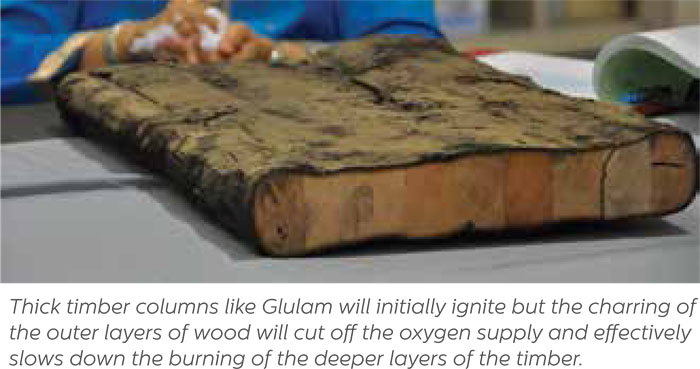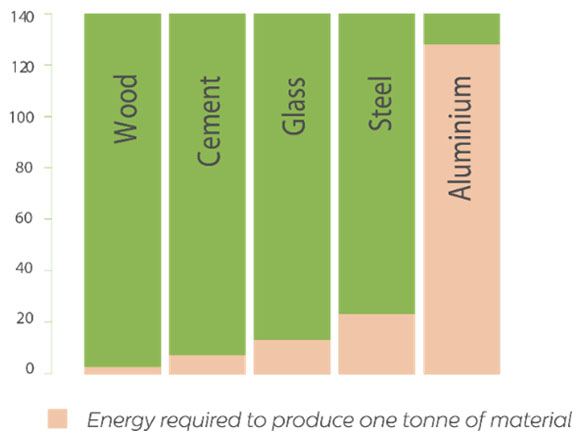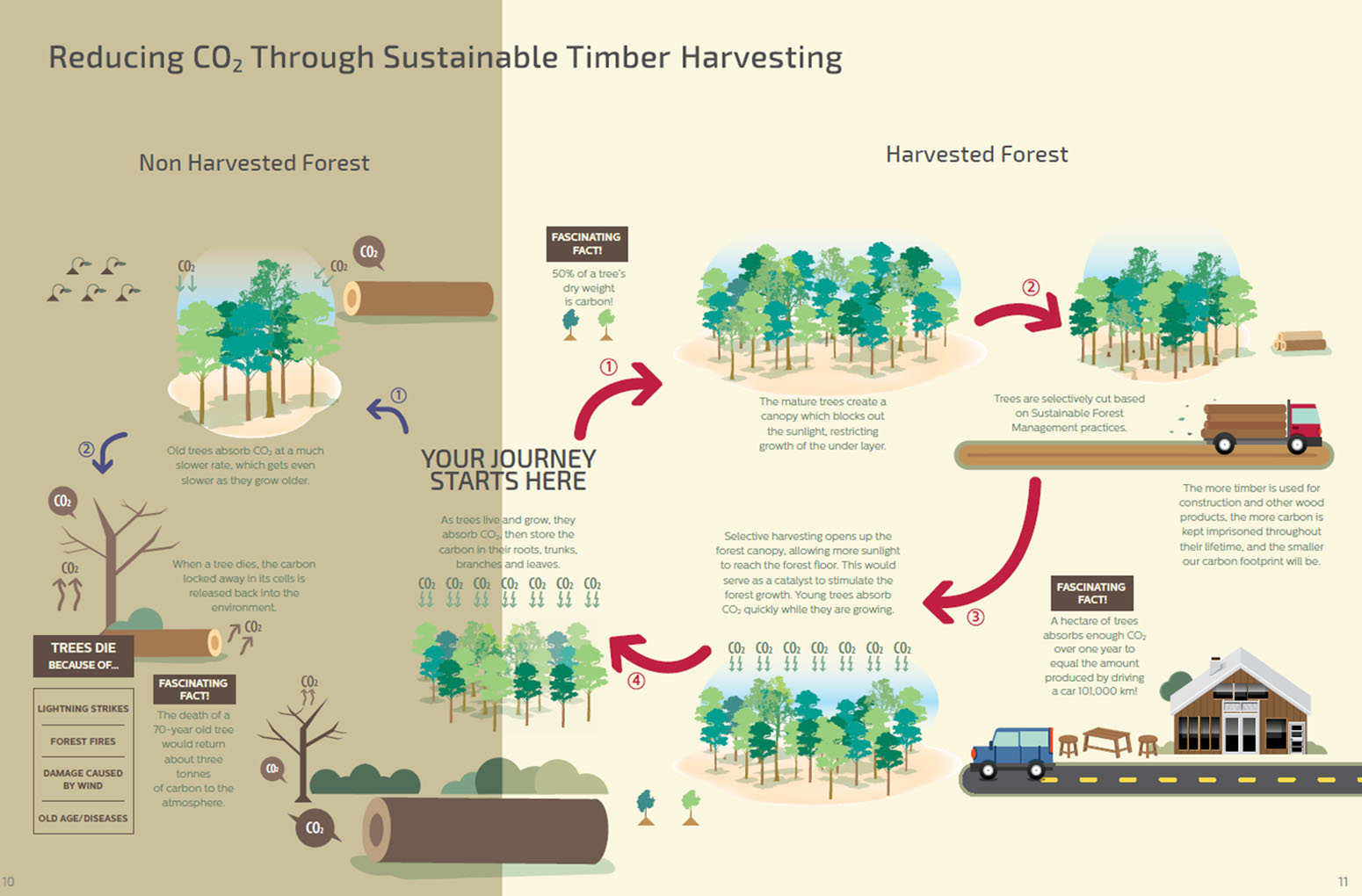Why Timber Material

Man’s relationship with timber has been nurtured for thousands of years. Timber is arguably the most versatile building material, allowing itself to be transformed beautifully for numerous applications, from structural to decorative and aesthetic.
And yet, there is a misperception that using timber contributes to the destruction of the environment. Many people believe that to be socially and environmentally responsible, they must leave the forests standing and avoid using timber altogether. It is true that irresponsible exploitation of forests will not contribute to the earth’s long term health. Nevertheless, what many people do not realise is that using sustainably harvested timber will in fact help in combating climate change, caused by the excessive release of carbon dioxide into the atmosphere.
Positive Attributes of wood
Strength
Wood has a high strength-to-weight ratio, i.e., for the same strength required for a given structure, the weight of the timber material to be used can be as much as 16 times less than steel, or five times less than concrete. Weight for weight, wood can be designed to carry a heavier load than steel, i.e., one tonne of wood can carry a heavier load than one tonne of steel.
Modern engineered timber products like Glued Laminated Timber (Glulam) and Cross Laminated Timber (CLT) allow wood to be used in constructing high-rise buildings. Currently, the world’s tallest timber building is a ten-storey apartment called Forte in Melbourne. In the pipeline are plans t
Durability
There is a great variety of timbers with a wide range of properties to suit various outdoor and internal applications, and for both aesthetic and structural purposes. While some timbers are perishable under uncontrolled conditions, many species of timbers can naturally last for a very long time.
Timber can be treated to make it harder, termite-resistant or weather-resistant. Treatment can be done by impregnating wood with certain chemicals which are effective yet safe for use by humans. This process is widely available and is affordable. Treated timber will often out-last naturally durable timbers
Excellent Insulator
Wood is an excellent insulating material because of the presence of the empty cell walls, which act as tiny air traps that resist the transfer of heat. This characteristic is deemed ideal for insulation materials. Compared with wood, other building materials such as bricks, steel and concrete are not good insulators.
Wood requires minimal external energy to keep a building within the thermal comfort zone of its inhabitants. Wood is six times better than brick as an insulator; eight times better than glass; 15 times better than concrete; 390 times better than steel and 1,700 times better than aluminium.
Performance in Fire
Research has shown that timber used as structures, such as columns in large buildings, performs better during a fire compared to steel or concrete. This is because steel will buckle and concrete will crack and crumble very suddenly under high temperatures. Thick timber columns, on the other hand, will initially ignite but the charring of the outer layers of wood will cut off the oxygen supply and effectively slows down the burning of the deeper layers of the timber. The slow rate of burn is important because it gives the occupants enough time to evacuate during a fire. Timber columns have been found to be still standing and functioning after intense fires.
The speed and ease of ignition is dependent on the rate of accumulation of heat at the surface of the wood. Several factors influence this rate and they are the size of the piece of wood, the rate of heat loss from the surface, the presence of thin outstanding edges and the rate which heat is supplied to the surface of the wood. Small pieces with sharp projecting edges, such as matches, ignite easily. On the other hand, large pieces, with round edges, like a round Glulam column catch fire at a much slower rate. In buildings with engineered timber panels, heat does not conduct from one side of the panel to the other.


Acoustic Properties
Timber has good acoustic properties. It has better sound dampening capacity than most structural materials such as concrete, which reflects sounds with stronger echoes. The natural acoustic properties of timber control this excessive echo by reducing the transmission of sound vibrations.
Wooden panels and timber flooring are commonly used to improve the acoustical properties of a room. They are used to reduce noise and improve the quality of sound in spaces such as auditoriums and theatres.
Versatility
Timber is the most versatile building material compared to other building materials. It can be used for both structural and decorative purposes, as well as for outdoor and internal applications. Timber exudes warmth and adds character to a place. Understanding timbers and their properties is important to help us select the right species for the right application.
The fact that trees grow according to the natural environment they are in means that there are thousands of grains and shades to choose from globally, providing an excellent choice for architects, builders and interior designers.
Energy Efficient
Processing wood is energy efficient. The production of one tonne of cement requires five times more energy than the production of one tonne of wood; 14 times more energy for one tonne of glass; 24 times more energy for one tonne of steel and 126 times more energy for one tonne of aluminium.

Reducing CO2 through Sustainable Timber Harvesting

The ‘Green’ Credentials of Wood
Carbon Sequestration
Wood and CO2 are natural partners. Trees absorb CO2 as they grow, so the more forests we plant, the more CO2 they can absorb. Trees play an important role in reducing carbon in the atmosphere by being part of the carbon cycle that involves the trees absorbing CO2 from the air, releasing oxygen and storing the carbon in the wood.However, mature trees absorb less CO2 than young trees. Harvesting mature trees will open up the forest canopy, enabling younger trees to grow, thereby absorbing more carbon from the atmosphere.
Carbon Locking
The CO2 that is absorbed by the trees as they grow remains “imprisoned” in the wood. Using wood-based material contributes to the continued imprisonment of the CO2.Building with wood causes much lower CO2 emissions than building with conventional construction materials. No other mainstream building material does this.
Climate Change Mitigation
Using timber that comes from sustainably managed forests can actually help address climate change by reducing the amount of greenhouse gases in the atmosphere. Trees absorb CO2 as they grow, thus significantly reducing the amount of CO2 in the atmosphere. The absorbed carbon is converted into wood in the tree. However, if the forest was left totally alone, the trees in the forest will grow old and die. Trees can also die due to fire, wind damage and lightning strikes. When a tree dies, the wood will rot and release the stored carbon in the form of CO2. In order to keep the carbon imprisoned in the wood, it is better to harvest the bigger trees than to let them die and rot.Sustainability
Timber is the ‘greenest’ and only truly renewable building material. New trees can be planted to replace those that were harvested, thus ensuring a perpetual supply of timber. Moreover, the planting and harvesting of trees contribute positively to the health of the environment through the cycle of “absorb-and¬lock” of CO2 in the atmosphere.Recyclability
Timber is a fully recyclable building material and it requires a fraction of the energy required to produce concrete or steel. When a building is demolished or renovated, the recovered timber can be used in another project. The recovered timber can be resized and reshaped to cater to other uses.May 17,2024
